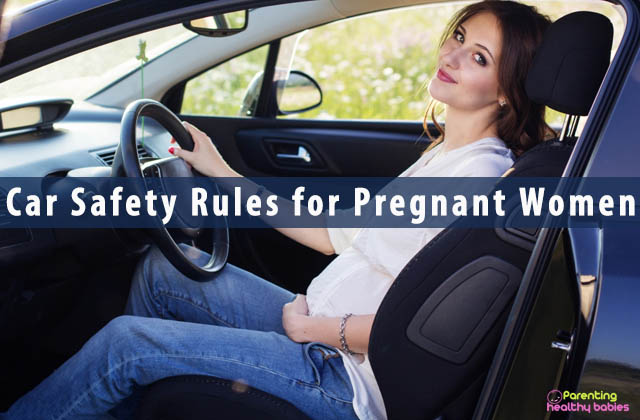Becoming a mother is the most beautiful feeling in the world. There is nothing more important in the world than the baby that is preparing for this world. However, pregnant women should be a lot more careful when they are in a car because if an accident occurs they can easily get hurt, moreover, they can hurt the baby as well.
Many questions come in a pregnant woman’s mind while driving a car or traveling in it, like, can the seatbelt cause an injury to me or my child? Are there any medical objections to driving? and many more.
Now that road travel is so frequent during the holiday period, some pregnant women may have concerns regarding whether or not to get behind the wheel. If the doctor does not suggest otherwise, it is perfectly safe to drive. Also, don’t ignore and forget things that are to be taken care of, as safety is an extremely crucial thing during pregnancy. Nothing can go wrong as long as some recommendations that are given below are followed.
Car Safety Rules for Pregnant Women: 11 Tips for a Safe Trip
Always wear your seatbelt
Wearing a seatbelt is mandatory for pregnant women. Most of the pregnant women are using their seat belt in a wrong manner and that can be dangerous for the child. You should wear one belt up to the chest and another one under the belly because if you wear belt up to the belly it can cause damage to the child. The lap belt must be placed as far down as possible in order to restrain the woman at the pelvis and avoid putting pressure on the fetus. The diagonal shoulder belt must go over the abdomen, between the breasts and rest on the collarbone.
Be a passenger
You should avoid driving during the pregnancy. Because in most cases the belly is big enough so there is a very little gap between the belly and the steering wheel. In such a case, even a minor crash can be dangerous for your baby.
Don’t lean forward
While you are traveling you should always wear your seatbelt because if you do that, you don’t need to lean forward. Also, keep your belly about 25 cm away from the steering wheel because, sliding your seat back away from the steering wheel helps prevent injuries in the event of an accident if the lower part of the wheel comes into direct contact with your abdomen.
Reduce by half, the risk of serious fetal injuries
according to the latest studies, half of all possible serious fetal injuries in the case of an accident could be prevented by correctly wearing the seatbelt. Without this safety device, a direct impact with the steering wheel could cause serious injuries, such as placental abruption or uterine rupture.
Always activate the airbag
Experts point out that it is advisable to activate both front seat airbags when a pregnant woman is either driving or sitting in the front passenger seat. This safety feature coupled with appropriate seat belt use can protect a pregnant mother and her unborn child from crashing into the vehicle’s interior, other passengers or being thrown from the car in the event of an accident
Comfortable and safe, month after month
There is a huge difference between driving during your first trimester of pregnancy and between months, four to nine. For this reason, it is important to adjust the position of the seat as the months go by, adjust the seat back as vertical as possible and adopt a correct sitting position.
Wear a complementary pelvic band
Some women, especially if they are in late pregnancy, optionally choose to wear a pelvic band below their belly. Although it is not mandatory, it can make your trip more comfortable.
Loose, comfortable clothing, flat shoes, and relaxed driving
As in any other normal circumstance, pregnant women are advised to wear flat, comfortable shoes when driving. It is also advisable to increase the safety distance to avoid any sudden maneuvers and unpleasant surprises.
Make frequent stops
It is generally advisable to avoid making long trips. Constant hunger and the need to take frequent bathroom breaks are common among most pregnant women, so it is recommended to stop often and take advantage to walk around and activate your blood circulation.
When to stop driving
There is no explicit prohibition in the case of a healthy pregnancy. A pregnant woman must exercise “common sense” and stop driving when they no longer feel comfortable behind the wheel. For this reason, many pregnant women often stop driving during the last month of their pregnancy.
Carry some snacks
Whenever you are traveling make sure that you carry a few bottles of water and some fruits so that you can eat, whenever you feel low.
Things to remember
Rehydrate the body and have a light snack, also, avoid another journey without having ample rest. Though car travels are safe but there is always the possibility of sudden jerks and stops. If the road is bad, you are sure to have an uncomfortable time. Intercity car travel usually poses no bigger problems than nausea and can be undone easily with a little extra care. For shorter trips, car journey is the best, you can halt every two hours and have something to eat, drink, visit the bathroom and walk a few steps every time to get out of the car. A cushion to support the lower back will be a great asset. Never forget to wear a seatbelt in spite of the airbag. Sitting in a particular position for longer periods of time can cause your feet and ankles to swell and cramp, so make sure you take a break every few hours, especially if it is a long journey. During pregnancy, your urine output tends to increase so you may need to stop frequently to visit the bathroom too. Always remember that you need to stay alert while traveling during pregnancy, by a car. Keep important things handy and make sure you focus on your well-being in case of any chaos. Get rest where required and be stress-free.













